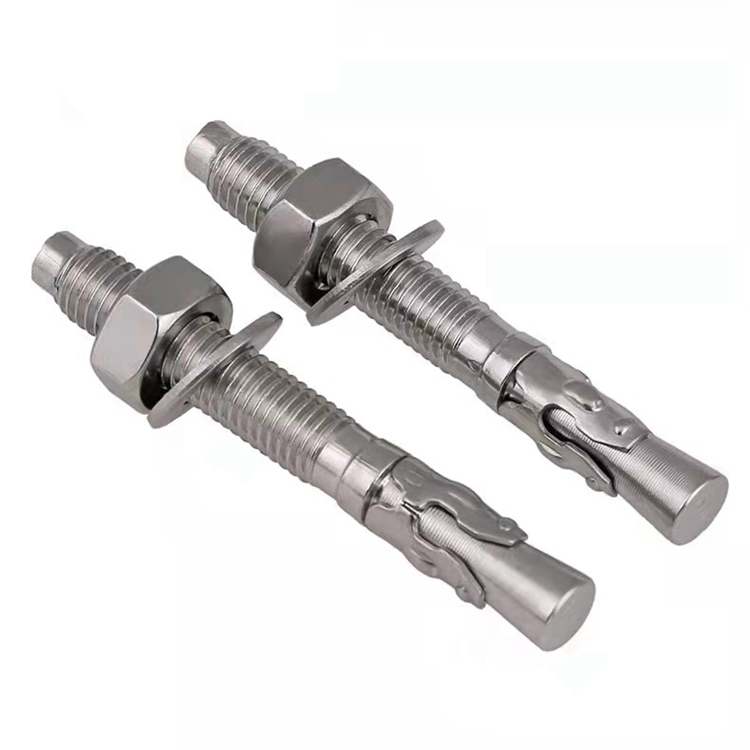Long Bolts and Nuts for Stronger Connections in Construction and Engineering Applications
अक्टूबर . 15, 2024 06:11 Back to list
Long Bolts and Nuts for Stronger Connections in Construction and Engineering Applications
The Importance of Long Bolts and Nuts in Modern Engineering
In the realm of engineering and construction, the significance of fasteners cannot be overstated. Among these, long bolts and nuts play a critical role in ensuring structural integrity and load distribution in various applications. As projects become increasingly complex, the demand for reliable, durable, and high-performance fastening solutions has soared. This article delves into the importance, applications, and considerations surrounding long bolts and nuts.
Understanding Long Bolts and Nuts
Long bolts are elongated fasteners designed to join two or more components securely. They typically feature a threaded shaft that allows for the attachment of nuts, which serve to hold the joint together by creating a clamping force when tightened. The length of these bolts can vary significantly, often exceeding standard sizes, making them essential for specific applications where traditional bolts would not suffice.
Nuts, which are usually hexagonal, are paired with bolts to complete the fastening system. Their primary function is to provide a means to secure the bolt in place. The interplay between the long bolt and nut is crucial for maintaining the tension necessary to withstand shear and tensile forces, ensuring that the components remain joined under various stress conditions.
Applications in Various Industries
Long bolts and nuts find applications in a multitude of industries, including construction, automotive, aerospace, and machinery manufacturing
.1. Construction In civil engineering projects, long bolts are indispensable for connecting structural elements such as beams, columns, and girders. They are often used in conjunction with anchor bolts to secure buildings to their foundations, ensuring stability and safety in the face of environmental forces like wind and earthquakes.
2. Automotive Automotive manufacturers utilize long bolts in various components, from engine assemblies to chassis construction. The strength and reliability of these fasteners are crucial in ensuring vehicle safety and performance.
3. Aerospace In the aerospace sector, lightweight yet strong materials are paramount. Long bolts and nuts made from advanced alloys provide the necessary strength-to-weight ratio, essential for aircraft and spacecraft components, where every ounce matters.
long bolts and nuts

4. Machinery In industrial machinery, long bolts facilitate the assembly of heavy components, providing a robust connection that withstands operational vibrations and stresses.
Considerations for Selection
When choosing long bolts and nuts for a particular application, several factors must be considered to ensure optimal performance
- Material The choice of material significantly affects the strength, corrosion resistance, and overall performance of the fastener. Stainless steel, carbon steel, and alloys are common choices depending on environmental conditions.
- Coating To enhance resistance to corrosion, especially in outdoor or marine environments, coatings such as galvanized or zinc-plated finishes can be applied.
- Thread Design The type of threading (fine or coarse) impacts the bolt's ability to handle load and how it engages with the nut. Fine threads are typically stronger and better for situations with less risk of vibration, while coarse threads are easier to install and can handle more significant adjustments.
- Load Capacity Proper calculation of the load that the bolted joint will experience is essential. Engineers should refer to standardized load ratings to choose the correct size and grade of the bolt and nut.
Conclusion
Long bolts and nuts are essential components in a variety of industries, ensuring the safety, durability, and effectiveness of structures and machines. As technology advances and the need for more sophisticated engineering solutions grows, the development of innovative materials and design techniques for these fastening systems will continue to evolve. Understanding their significance and proper application can lead to enhanced performance and safety in countless projects around the world.
Latest news
-
Durable Bolts for Lawn Mower Handle - Top Supplier & Manufacturer
NewsAug.22,2025
-
High-Quality Bolts for Lawn Mower Handle Supplier & Manufacturer
NewsAug.21,2025
-
Reliable Axle Nuts Supplier | High-Quality Automotive Parts
NewsAug.19,2025
-
Premium Wire Bolts Suppliers | Durable & Reliable Fasteners
NewsAug.18,2025
-
Leading Metric Wood Screw Companies & Manufacturers
NewsAug.17,2025
-
Top Wire Bolts Suppliers - Quality & Durable Fasteners
NewsAug.15,2025
